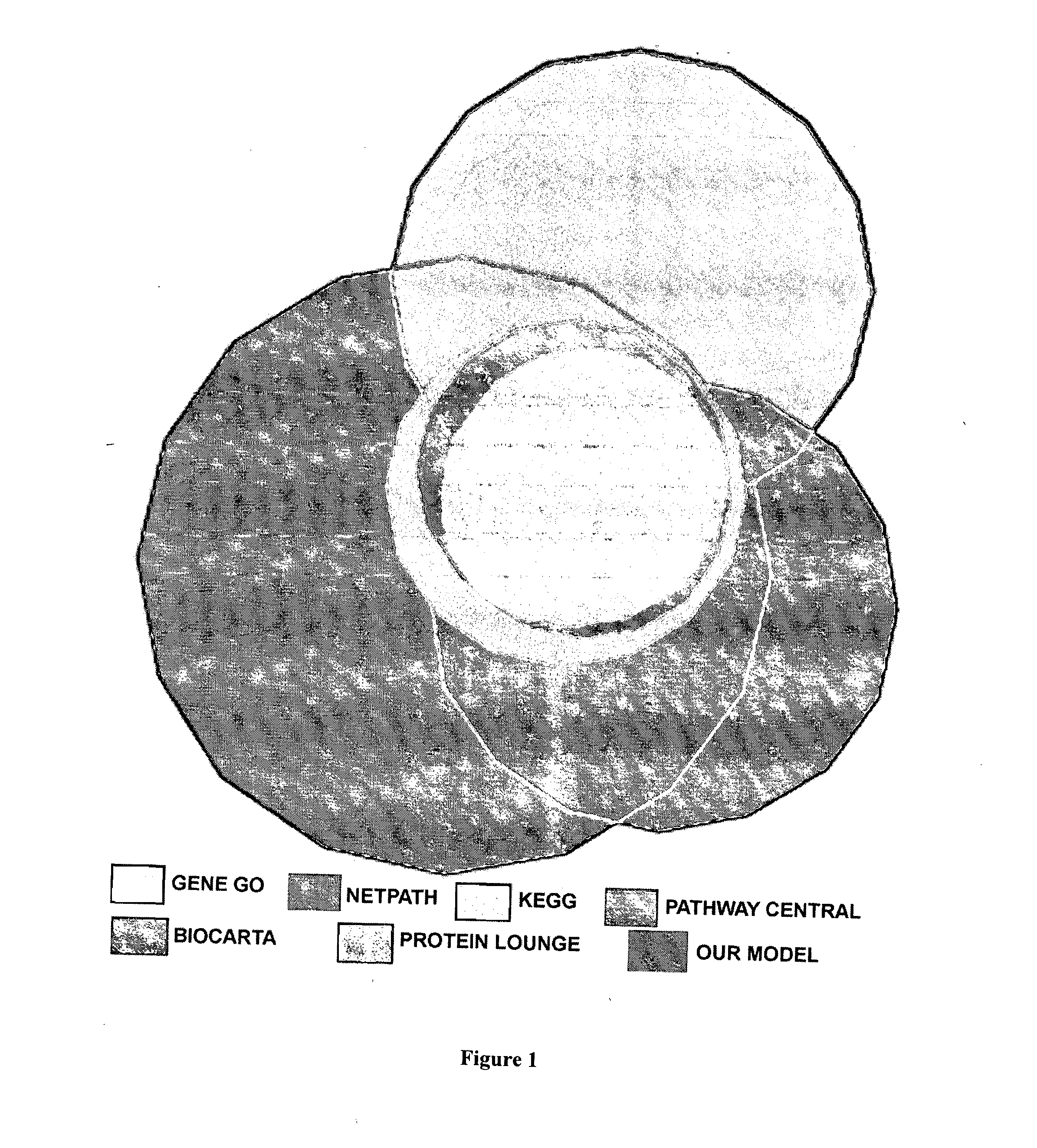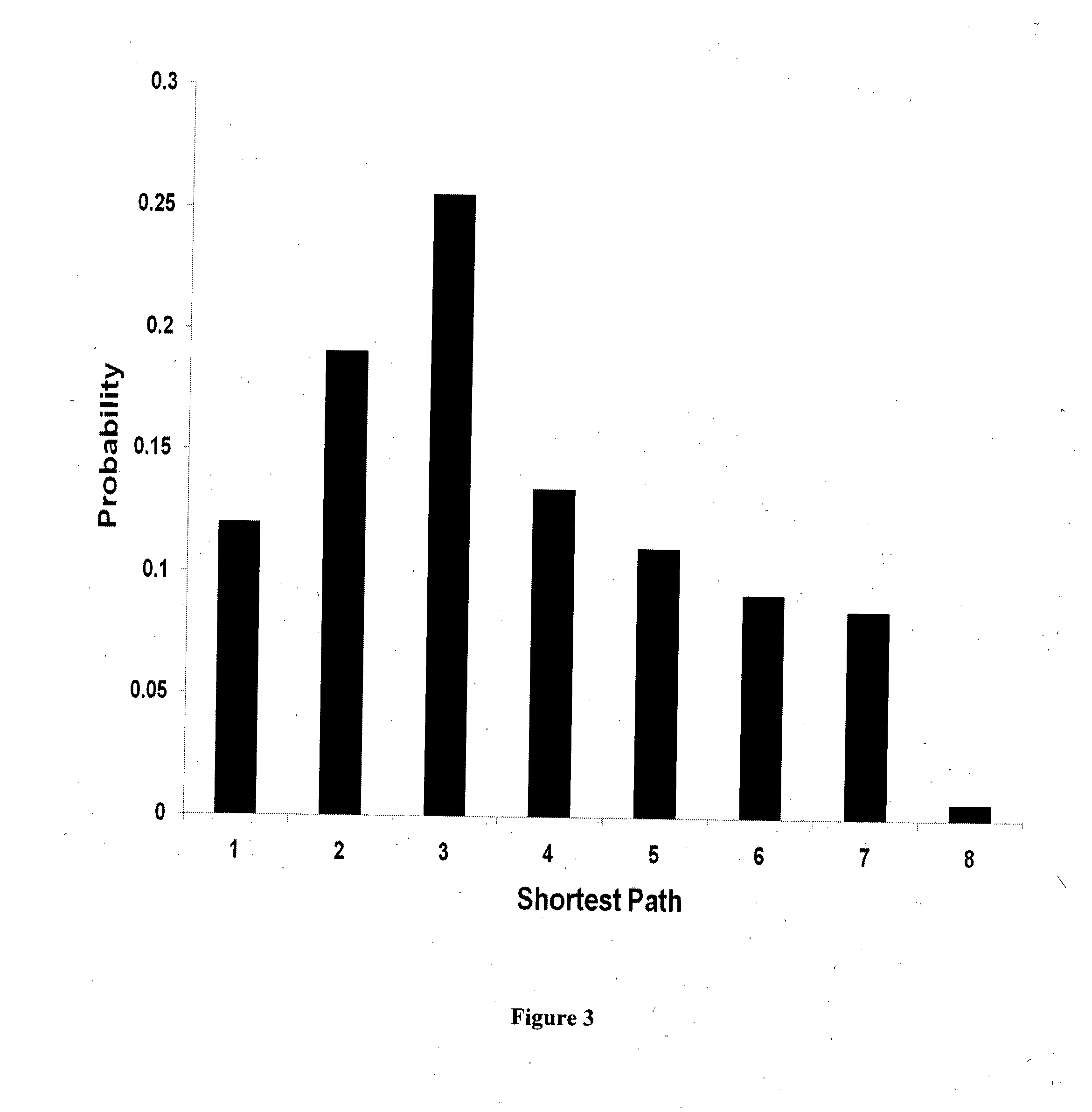In silico method to identify the important biomarkers and combinatorial oncoproteins in target based cancer therapy
a cancer therapy and biomarker technology, applied in the field of in silico method to identify the important biomarkers and combinatorial oncoproteins in the target based cancer therapy, can solve the problems of major challenge to understand the regulatory activity, identification of such proper target oncoproteins, and inability to prevent the malfunction of individual proteins targeted in this pathway
- Summary
- Abstract
- Description
- Claims
- Application Information
AI Technical Summary
Benefits of technology
Problems solved by technology
Method used
Image
Examples
example 1
Experimental Methodology
[0129]1. Construction of Hedgehog Signaling Networks:
[0130]A comprehensive Hedgehog signalling map (FIG. 4 and FIG. 5) was constructed by collating the data based on human cell line and not any particular cell type or disease specific scenario from various biological databases provided [in Table 3].
[0131]The cross talks and phenotypic expressions of the HH pathway (hedgehog pathway) named as “Cellular Responses” were connected with output / produced proteins by dotted black arrow. The following are the descriptions of the proteins of each region in the reconstructed Hedgehog signalling network.[0132]1. Extracellular and Membrane: In this region, the three hedgehog ligands viz. Sonic Hedgehog (SHH), Indian Hedgehog (IHH) and Desert Hedgehog (DHH) were bound to the receptor proteins Patched1 (PTCH1) and Patched2 (PTCH2) of a hedgehog target or responsive cell. It was established that in the absence of any of these hedgehog ligands, PTCH1 / PTCH2 inhibits trans-memb...
example 2
Comparison Between Normal, Cancer and Perturbed Scenarios for Glioma, Colon and Pancreatic Cancers
TS: Treated Scenario; NS: Normal Scenario; GS: Glioma Scenario
[0157]Glioma Scenario: The comparison between Normal, Cancer and Perturbed scenarios for Glioma is provided in Table 4 and in FIGS. 7A-7D.
[0158]Form the analysis of the data in Table 4 and FIGs. 7A to 7D, the present inventors identified the key proteins that can be used as target proteins for the perturbation analysis or combinatorial drug treatment scenario (TS).
[0159]Combining data, indicates that proteins such as SHH, SMO, STK36, RAS, TWIST, ERK12, HFU, ULK3 activated the GLI transcription factors in the cytoplasm of Glioma cell and due to this activation, the output proteins were over-expressed at the end of the present pathway.
[0160]FIG. 7A depicts that in gliaoma scenario, the number of upstream activator proteins of DHH, SHH, IHH, PTCH1, SMO, HIP1, STK36, GLI1, GLI2, GLI3_R, NUC_GLI1, NUC_GLI2, CTNNB_TCF4 etc. were hi...
example 3
Validation of Glioma, Colon and Pancreatic Scenarios
[0167]In case of Glioma Grade IV cell line, the inventors found the expression level (UP as Red and DOWN as Blue) of 33 proteins out of 57 proteins (first column of FIG. 10A) from previously done experimental result on Glioma cell line [24]. Rest of the proteins showed undetermined expression level and were grouped into the lower portion (Light Blue). Within these 33 determined proteins, the simulation (SIM1; second column of FIG. 10A) correctly predicts the expression level of 22 proteins (66.66% accuracy). This result also signify the effect of co-occurrence of the over expression of the activator proteins HFU, RAS, TWIST of hedgehog pathway in Glioma Grade IV cell line. Further using the experimental expression data [24], Simulation 2 (third column of FIG. 7A) was performed and the outcome with both Experiment (EXP) and Simulation 1 (SIM1) (Table 6 were compared. Comparing the results of Simulation 2 (SIM2) with Experimental dat...
PUM
 Login to View More
Login to View More Abstract
Description
Claims
Application Information
 Login to View More
Login to View More - R&D
- Intellectual Property
- Life Sciences
- Materials
- Tech Scout
- Unparalleled Data Quality
- Higher Quality Content
- 60% Fewer Hallucinations
Browse by: Latest US Patents, China's latest patents, Technical Efficacy Thesaurus, Application Domain, Technology Topic, Popular Technical Reports.
© 2025 PatSnap. All rights reserved.Legal|Privacy policy|Modern Slavery Act Transparency Statement|Sitemap|About US| Contact US: help@patsnap.com



